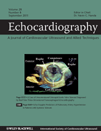Progressive Subclinical Left Ventricular Systolic Dysfunction in Severe Aortic Regurgitation Patients with Normal Ejection Fraction: A 24 Months Follow-Up Velocity Vector Imaging Study
Abstract
Objectives: We aimed to evaluate long-term changes in left ventricular (LV) longitudinal systolic functions in patients with asymptomatic, severe aortic regurgitation (AR) by using novel 2D strain imaging. Methods and Results: Thirty severe AR patients with normal ejection fraction (EF) and 30 healthy controls were evaluated by both conventional echocardiography and velocity vector maging (VVI) based strain imaging at baseline and 24 months follow-up. To evaluate LV longitudinal systolic function, segmental peak systolic strain and strain rate (SRs) data were acquired from apical four-chamber, two-chamber and long-axis views. Longitudinal peak systolic strain and SRs of the LV were decreased in patients with severe AR compared to controls at baseline (P = 0.0001). The impairment was more significant in 24 months follow-up (P = 0.0001 for strain, P = 0.01 for SRs). Longitudinal peak systolic strain was significantly correlated with left ventricular end-diastolic (LVEDD; r =–0.42, P = 0.0001) and left ventricular end-systolic diameter (LVESD) (r =–0.41, P = 0.0001) There was also a strong negative correlation between LV SRs and LVEDD (r =–0.50, P = 0.0001), and LVESD (r =–0.39, P = 0.0001). Conclusions: VVI-derived strain and SRs may be used as adjunctive, noninvasive parameters in the assessment of subclinical LV dysfunction and its progress during clinical follow-up, in patients with severe AR. (Echocardiography 2011;28:886-891)




